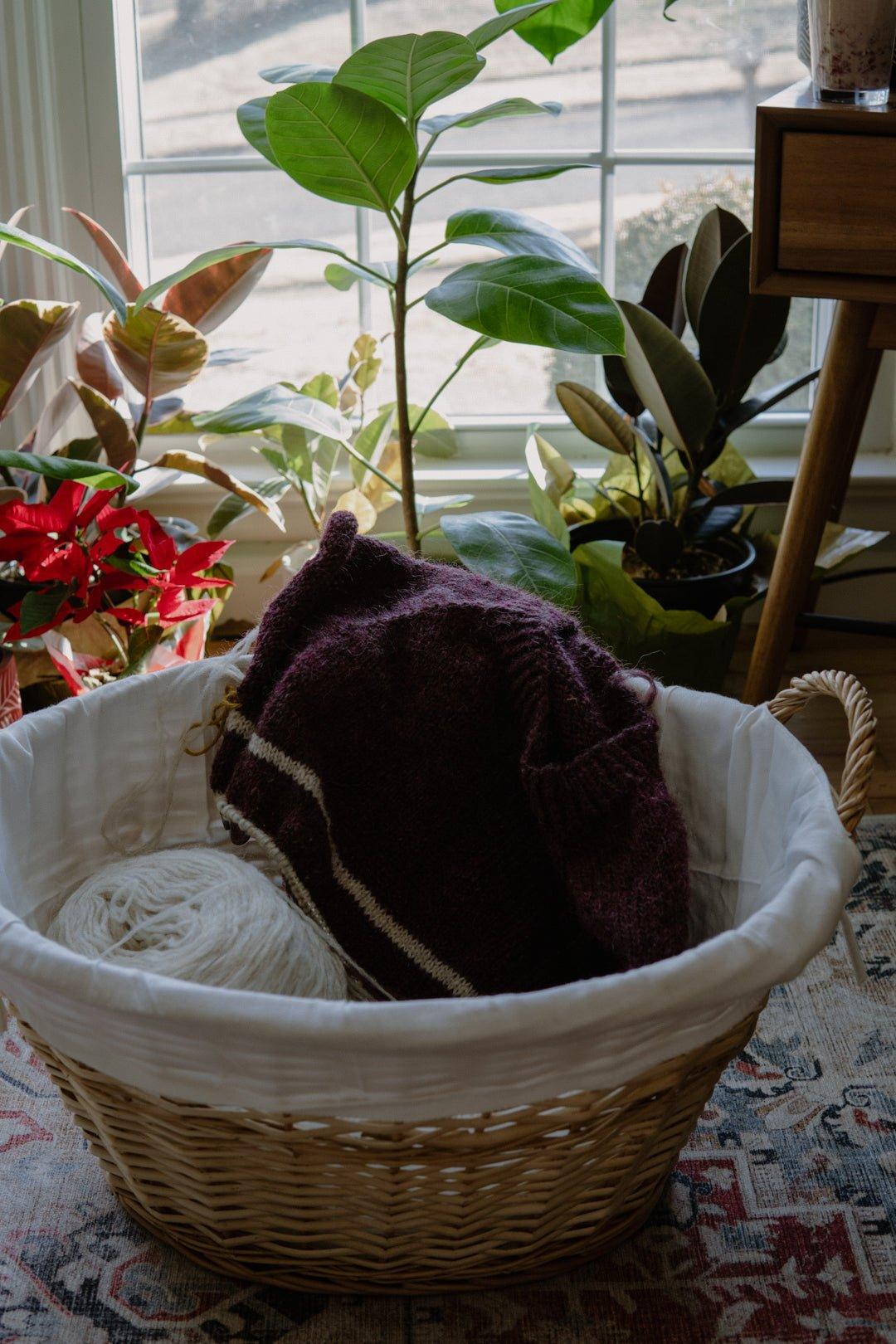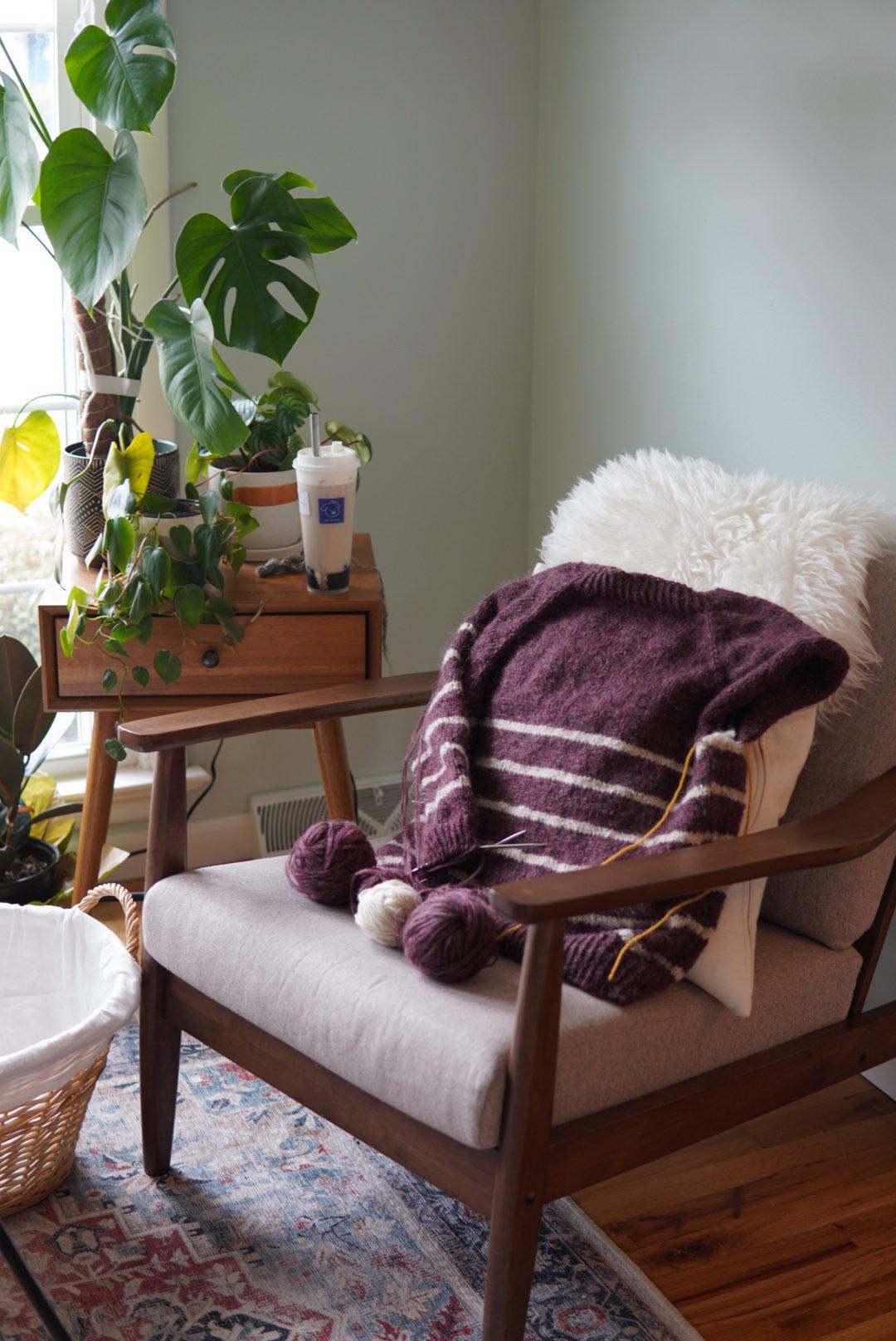Making better sock choices: How I think about yarn.
Now that we've talked about all the ways to evaluate a yarn for sustainability reasons and for our personal values, why we shouldn't be horrible to other people who make different choices than we do, and the different things that make this a personal choice and not one size fits all... It's time to take a little look at how I personally make choices as a way to look into how one person might balance different factors in making yarn choices for a better world!
This post is the culmination all of those previous ones. It's my real life practice for how I really buy yarn and choose who I work with for my business... Exposed for you to see so you can get a good look at how I, a totally imperfect person just trying their best, am making decisions.
Because it’s going to be on my feet, there are unique considerations to how I choose yarn for this sort of knit. Of course, I’d like to be as sustainably minded as I can… but I’d also like to make socks that last. To me, a pair of socks that get used over and over again hundreds of times with love over the course of a few years, even if it is superwash and has nylon in it, is probably a more sustainable choice than a sock that gets a hole immediately, which I don’t take the time to mend. Ideally, I’d mend all my socks, but let’s real… the mending pile does grow ever bigger and I’m still slowly making my way through it.
Here are 3 categories of sock yarns I have purchased or used recently and how I think about each one’s suitable use. All of these have a place in my making practice, but for very different reasons.
Before we get started though, I just wanted to touch briefly on my personal usage–I wear my socks and I wear them hard, about 3 seasons of the year (spring/fall/winter). I typically wear through a pair of superwash nylon blend socks in about two years, and I have about 12 pairs on rotation at any given time.
The Artisanal Hand Dyed: Big Little Yarn Co - Trusty Sock
Melanie’s Trusty Sock base is your typical superwash merino base with 25% nylon in it. It’s a really standard fingering weight, and I like it because it’s soft, it’s durable because it is a 4-ply spin and it has some nylon in it, and it’s machine washable for when my kids get into muddy scrapes while wearing them. Sock bases that hand dyers use like this are also really predictable, so that you can get a reliable result from similar yarns across dyers.
Plus, Melanie is a fellow Asian American fiber artist, and supporting artists like her is a priority to me. She has the most beautiful color sense, and her speckling technique is superb and results in the most beautiful possible socks.
I really like socks on superwash because I hardly ever wear superwash otherwise, and this is a place where superwash yarn serves dual function—I can get the color speckling and bright dye jobs on superwash sock yarn, and the washability and lack of felting/shrinking function of superwash for the particular use of socks.
Socks will rub and get a little damp from sweat over time, which makes it in particular danger of felting during wear. To me, superwash and nylon blend bases really shine in this area, whereas I don’t really use them for many other uses at all!
Some things that might deter me from this sock yarn is of course, the very qualities that make it ideal for socks: the superwash process and nylon. Please note that this is not a specific critique of Melanie’s yarn, but serves as an example to all the bases that dominate the entire hand-dyed market right now.
These socks will shed micro plastics from their polymer coating and the nylon into the weather supply, which is a major source of pollution. The superwashing process involves running the fiber through a chlorine process, either by gas (very harmful to humans working in the factory) or by liquid immersion (less harmful to humans), both of which create chemical waste for the environment surrounding the factories. There are ways to offset these issues (such as by hand washing and reducing agitation, and thus micro plastics being released), but they have to be taken into consideration when we choose yarns.
This, by the way, is one of a few reasons why I will pretty much use superwash yarn in socks only and almost nothing else at this point in my knitting life. To me, these negative qualities are balanced out by how long I can wear the socks and thus how much lifespan the socks get, and how much overall harm is done to the environment, compared to a non-superwash yarn.
Buying from this category of artisanal hand-dyed yarn is my way of supporting and buying small yarn and fiber businesses, especially those owned by someone local to me, someone who is LGBTQIA+, or a person of color.
The Climate Positive: Garthenor Organic Snowdonia Sock
Here’s an interesting alternative to the usual superwash + nylon base. I purchased this recently to try it out, and am pretty excited to explore it.
The pluses are really obvious: it’s organic certified which has slightly higher standards for treatment of the animals (probably not perfect, but getting better), and it uses breeds like Romney and Hebridean, which are much hardier and durable breeds than Merino or BFL (more often seen in commercial sock yarns), to add some stability. Plus, it has a nice and tight twist to prevent wearing out, and comes in a range of beautiful heather colors.
I expect these socks to have some light shrinking and felting in the high use areas during the course of wear just from sweat and friction. For me, these areas are the bottom of the heel, just after the heel turn, and on my kiddo this is the balls of the foot and toe, so when I knit them up I might work in a little extra ease.
On the face of it this does seem like the ideal sock yarn… but there are a few other points to consider too.
I do expect these to wear out faster than my nylon socks, but they are a climate positive wool and I plan to just be really aware that I’m gonna have to mend these and show them lots of care and love and mending time. This means that per wear before holes appear, this might be the most expensive option of the 3 which is not an option I can reach for all the time due to budgetary reasons.
In my household, this is a yarn for me and me only, since I am the only person who is in charge of putting them away and making sure they don't end up in the washer.
I probably won’t be using these for my kids, because they get their socks dirty and for them, I’d really like the option to wash the socks in the machine when things get really grody. Plus, they rub their socks so hard in their shoes when they run around, that I think we have some real felting potential here.
The way I view this type of yarn is that I want to start reducing harm in the way I treat the world. I don’t think I have the time to mend every pair of socks I own over and over again if they wear out quickly. But personally I’m trying to slowly increase the ratio of climate-positive socks in my personal drawer as my capacity and time for mending has slowly increased. This is also the sort of fiber I really go for if I'm looking for fiber to spin socks with as an exploration diving deeper into natural fibers for my spinning practice.
The Budget/Bulletproof: Regia’s 4-ply or 6-ply sock yarns
This is a yarn that is historically very popular and well known. I know people with socks knit in this yarn (in either weight) that have been worn for up to a decade while washed and dried. They are superwash with virgin (that means not recycled) wool and 20% nylon. These are also super affordable so I really like them for teaching new sock knitters as a financially accessible option.
This is the sock yarn I plan to use for all my teaching as well as knit for my family members when I really need to quickly knit up a bunch of socks for school, knowing how hard my kids go on their socks.
This is the sock yarn I’d probably default to if I was having trouble affording the others. I just think it’s a really lovely option for those who might want to knit socks but can’t afford $28/skein of artisan-dyed yarn, so I do keep balls of it on hand to recommend to people who might want to dive into sock knitting.
I’m not comparing these socks with the others I’ve talked about here, but I’m comparing them with other commercially available sock options which may have been machine-knit in sweatshop factories, which also contain a much higher amount of plastics/polymer content. So to me, they are a harm reduction strategy, so that I can lower the amount of harm my family imposes on the world in a much more affordable way.
Is this my favorite sock yarn that is a perfect choice? No. But it's a basic one that helps me dress my children in a slightly less harmful way than just buying packs of socks from high fashion brands.
Conclusion
In conclusion… these are just three loose categories I sort all my sock yarn into. Some of these sock yarns I buy because I love a dyer’s aesthetic and their values align with mine. Some of them I buy because of budget reasons and because I have to buy lots of them to teach with or to knit for my kids with. Some of them I buy for personal use because they are climate positive.
Note that not every sock yarn has to be everything for everyone. I don’t think it’s necessarily possible to make “perfect” choices when it comes to climate-positivity while still also supporting BIPOC and LGBTQIA+ owned businesses. I consider all of these as essential to my making practice and I consider them in balance with each other, not against each other.
I hope this piece has been helpful in explaining the way I think about yarns in my making process. Your categories that you sort your purchases into might be totally different than mine to serve your particular making practice better for YOU!
Let me know if this was helpful in the comments, and if you’d like to see another post about how I choose garment yarns! Plus, I’d love to know a little about your thinking process in how you choose yarns.
If you found this post helpful, you can support me in this work by joining my monthly subscription or donate one time at my Ko-fi page:




Leave a comment
This site is protected by reCAPTCHA and the Google Privacy Policy and Terms of Service apply.